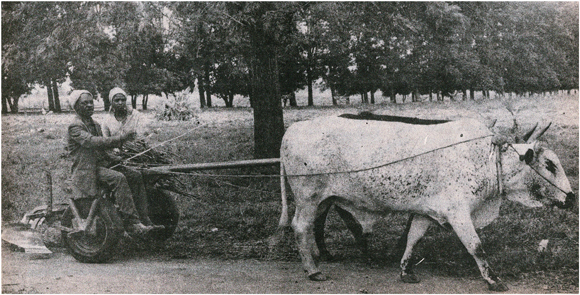Agriculture: Animal Traction,
1982-1993
Dossier MZ-0131
![]()

Above: A peasant couple riding on an ox-drawn cart with an unidentified ferramenta agrícola visible behind them. The picture was taken in the mid-1980s and published in the weekly Tempo.
The use of animal traction in agricultural production in Mozambique was constrained in the period after independence up to the end of the conflict with RENAMO in 1992-1994 by various factors. The cattle population in the country fell by over 80 percent from 196,000 head to 33,000 primarily because of the war, but also because of foot-and-mouth disease (Portuguese: febre aftosa) and nagana, transmitted by the tsetse fly. Ploughs, harrows, and other instruments were unavailable for the majority of peasant farmers, and large-scale dislocation of populations was also an obstacle. In addition, variations in climate and soil quality meant that no single solution was applicable across the whole country.
![]()
Click on the yellow folder image below to download a small zipped archive of the dossier, consisting of documents and press clippings in PDF format concerning animal traction. Note that new items will be added to this dossier from time to time. This version contains 6 items and is dated 28 February 2021
![]()



![Aluka: Struggles for Freedom [subscription required] Struggles for Freedom](imgs/aluka_200.png)



